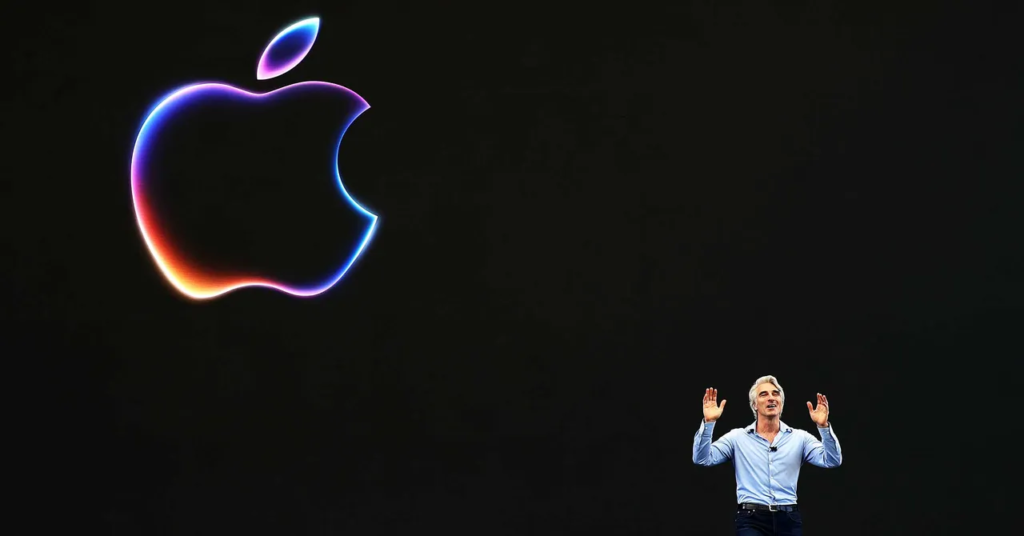s have become a new trick in the digital playbook of scammers, and this recent incident has taken deception to a new level. In a bold move that combined the allure of Apple’s brand with the booming interest in cryptocurrency, a YouTube channel managed to pull off an elaborate hoax that left millions of viewers duped.
This fake Apple livestream, which pretended to be an official event for the highly anticipated iPhone 16, not only misled the public but also attempted to promote cryptocurrency in the guise of an Apple announcement.
The fake Apple livestream, set up to look like a genuine event, went live at the same time as Apple’s official iPhone 16 launch. Leveraging Apple’s name, the channel attracted an enormous audience, drawn in by the familiar branding and the promise of a groundbreaking product announcement.
The scammers behind this fake Apple livestream used advanced AI-generated video technology to create a convincing imitation of Apple CEO Tim Cook. This fraudulent broadcast claimed to be unveiling new features of the iPhone 16, but instead, it used the platform to promote Bitcoin and other cryptocurrencies.
Read : iPhone 16: Apple’s AI-Powered Revolution – Everything You Need to Know
Read : Prices of iPhone 16 Across Different Countries
This incident highlights a growing trend where scammers exploit the reputations of established brands to mislead and defraud the public. The fake Apple livestream was not just a simple prank or an attempt to gain views; it was a sophisticated effort to exploit Apple’s brand equity and the cryptocurrency craze.
The fake broadcast was carefully timed to coincide with Apple’s official event, making it even more deceptive. Many viewers, excited about the new iPhone, were led to believe they were watching a genuine announcement from one of the world’s most valuable technology companies.
The success of the fake Apple livestream can be attributed to several factors. Firstly, the scammers used a channel that mimicked Apple’s official YouTube presence, complete with a similar name and branding. This visual similarity was enough to fool many into believing the livestream was authentic.
Secondly, the fake Apple livestream was broadcast at the exact same time as Apple’s official event, which meant that anyone searching for live updates on the iPhone 16 would have stumbled upon the fraudulent video.
Fake Apple Livestream:

Moreover, the use of AI-generated video added a layer of realism to the fake Apple livestream that made it more convincing. AI technology has advanced significantly, allowing for the creation of highly realistic video content that can mimic real people and their mannerisms.
In this case, the fake Apple livestream utilized AI to generate a video of Tim Cook speaking about cryptocurrency, creating a scenario that was both misleading and potentially harmful. The fake Apple livestream’s attempt to promote Bitcoin was a direct appeal to viewers’ interest in new technologies and investments, making it all the more enticing.
The impact of this fake Apple livestream extends beyond just the immediate viewers who were tricked. Such scams can have broader implications, including damage to the reputation of the brand being impersonated.
For Apple, a company that prides itself on its innovative and high-quality products, being associated with a scam can tarnish its image, even if indirectly. Additionally, the promotion of cryptocurrency through deceptive means raises concerns about the ethical implications of such practices and the potential for financial harm to unsuspecting individuals.
This incident also underscores the need for increased vigilance and awareness among consumers. With the rise of digital platforms and the ease of accessing live content, it is crucial for viewers to verify the authenticity of streams and broadcasts, especially when they involve high-profile brands or financial matters.
Consumers should be cautious of any live stream that promises significant financial gains or seems too good to be true, as these are often red flags for scams.

YouTube and other social media platforms are working to combat such fraudulent activities by implementing stricter policies and using advanced technologies to detect and remove fake content. However, the rapidly evolving nature of these scams means that both platforms and users need to remain vigilant.
Educating the public about the signs of fake streams and providing clear guidelines for reporting suspicious content can help mitigate the risk of falling victim to such scams.
In conclusion, the fake Apple livestream promoting cryptocurrency serves as a stark reminder of the lengths to which scammers will go to exploit popular brands and trends.
By mimicking Apple’s official YouTube presence and leveraging the excitement surrounding a major product launch, the scammers behind this fake Apple livestream managed to deceive millions. This incident highlights the importance of critical thinking and caution in the digital age, where not everything that glitters is gold.

